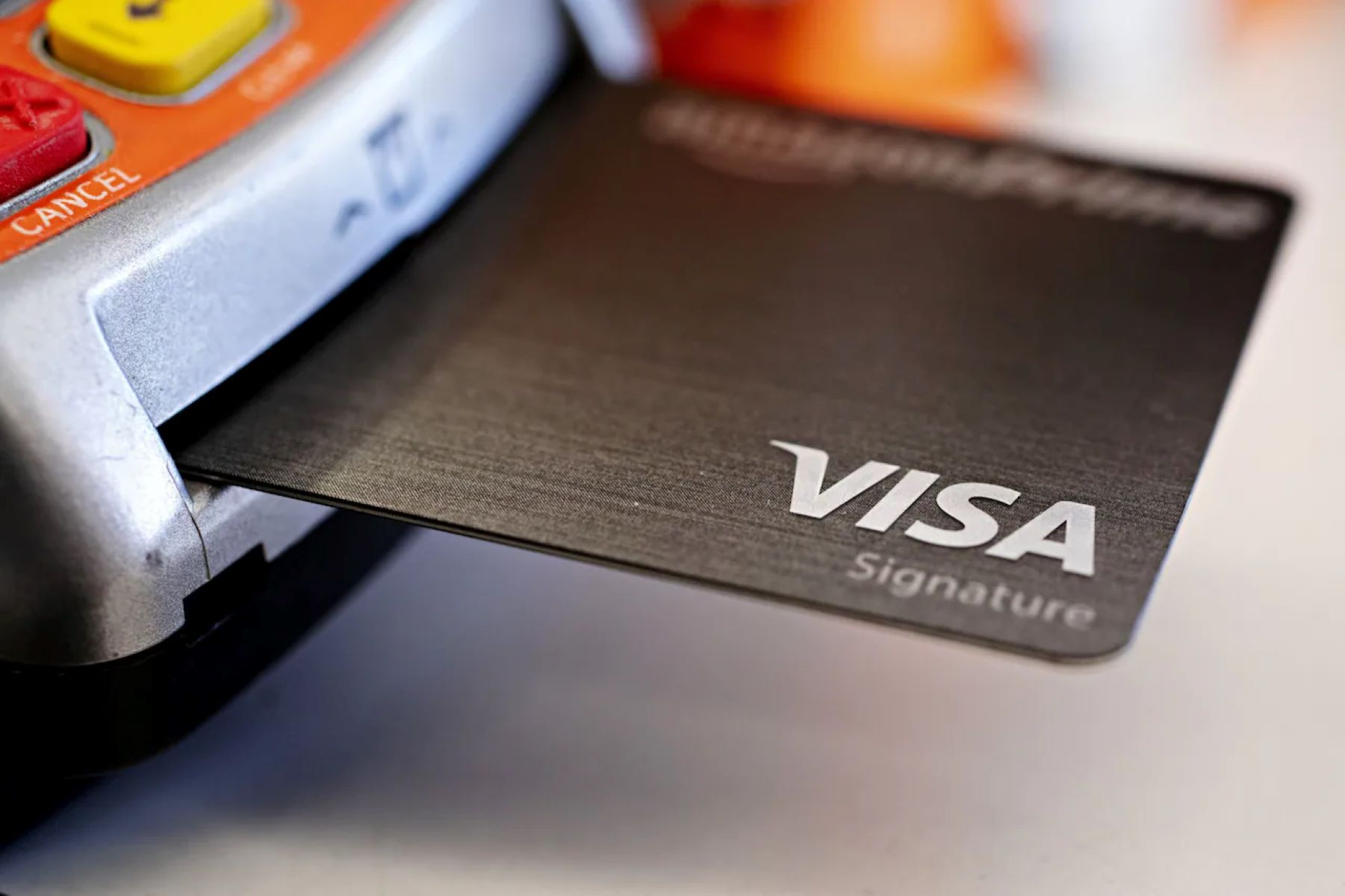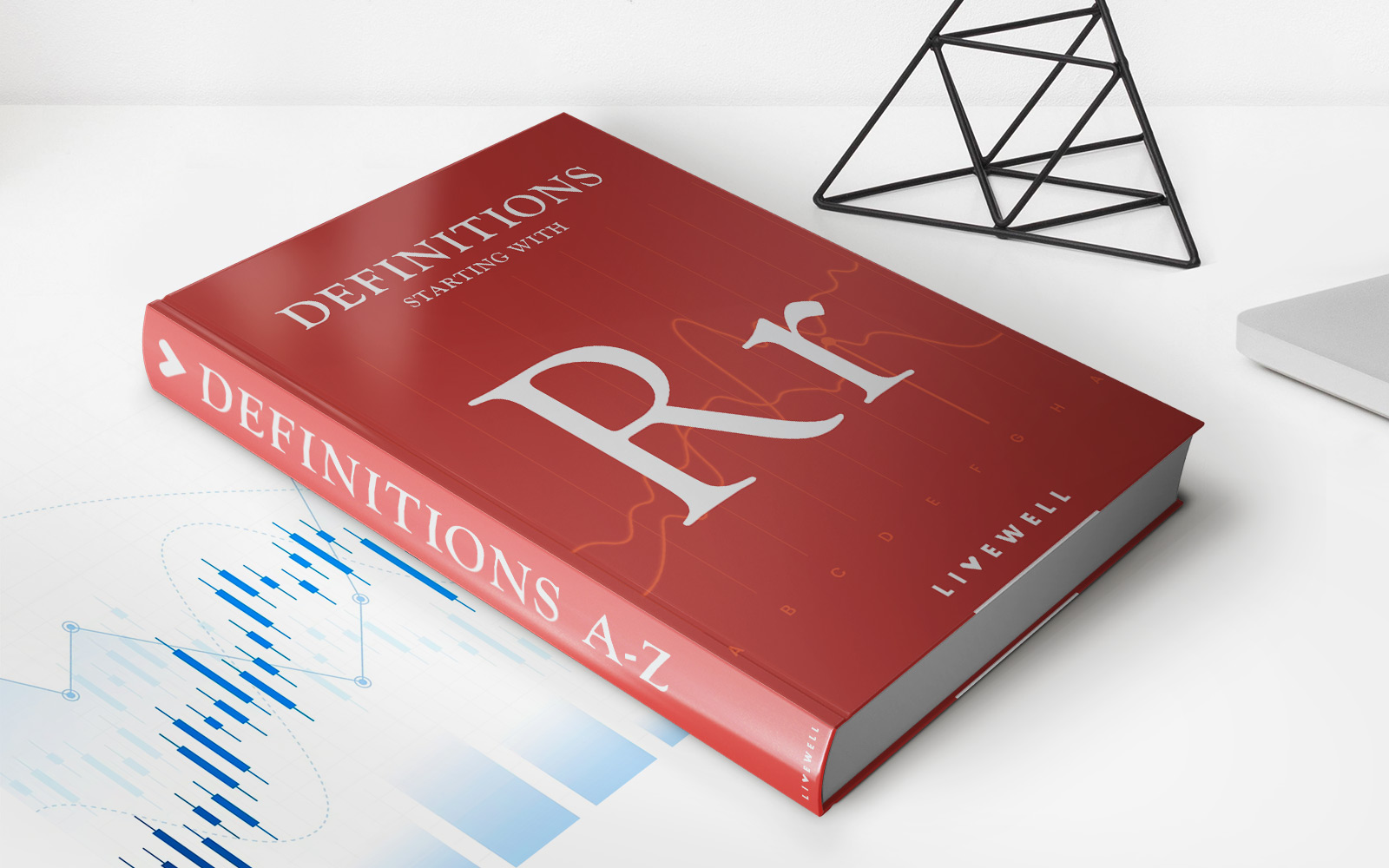

Finance
What Is Fixed Amount Credit Card
Published: October 26, 2023
Learn how fixed amount credit cards can help you manage your finances. Discover the benefits and features of this finance solution today.
(Many of the links in this article redirect to a specific reviewed product. Your purchase of these products through affiliate links helps to generate commission for LiveWell, at no extra cost. Learn more)
Table of Contents
Introduction
When it comes to managing finances, credit cards have become an essential tool for many individuals. They offer convenience, flexibility, and a range of benefits. However, traditional credit cards often come with high interest rates and the temptation to accumulate debt. This is where fixed amount credit cards come into play.
A fixed amount credit card, as the name suggests, is a type of credit card that provides a fixed spending limit to the cardholder. Unlike traditional credit cards that offer a revolving credit line, fixed amount credit cards restrict the amount of money that can be spent. This can be useful for individuals who want to control their spending and avoid getting into debt.
The concept of fixed amount credit cards has gained popularity in recent years, as more people are becoming conscious of their financial well-being and seeking ways to manage their expenses effectively. In this article, we will explore what fixed amount credit cards are, how they work, the benefits and drawbacks, and how they compare to traditional credit cards.
Whether you’re a seasoned credit card user or someone looking for a better way to manage your finances, understanding fixed amount credit cards can provide you with valuable insights to make informed decisions about your financial future.
Definition of Fixed Amount Credit Card
A fixed amount credit card is a type of credit card that comes with a predetermined spending limit. Unlike traditional credit cards, which offer a revolving credit line that allows users to borrow up to a certain credit limit and make minimum monthly payments, fixed amount credit cards restrict the amount of money that can be spent. Once the fixed amount is utilized, the cardholder cannot make additional purchases until the balance is paid off or the next billing cycle begins.
Fixed amount credit cards are often used as a tool to help individuals manage their spending and avoid excessive debt. By setting a predetermined spending limit, cardholders are forced to stay within their means and make more considered purchasing decisions. This can be especially beneficial for individuals who are trying to stick to a budget or curb impulsive spending habits.
Unlike traditional credit cards, fixed amount credit cards do not offer a revolving credit line, which means they do not charge interest on unpaid balances. Instead, cardholders are required to pay off the full balance each month, similar to a debit card. This can help individuals avoid accruing high-interest charges and help them develop responsible spending habits.
It’s important to note that while fixed amount credit cards can be an effective tool for individuals who want to control their spending and avoid debt, they may not be suitable for everyone. Those who require a larger credit limit for emergencies or unexpected expenses may find the fixed amount limit too restrictive. Additionally, individuals who struggle with paying off their balance in full each month may be better off with a traditional credit card that offers the flexibility of making minimum payments.
Overall, fixed amount credit cards provide a unique alternative to traditional credit cards, offering a way for individuals to control their spending while still enjoying the convenience and benefits of using a credit card.
How Fixed Amount Credit Cards Work
Fixed amount credit cards work differently from traditional credit cards in terms of how the spending limit and payment process are structured. Here’s a breakdown of how fixed amount credit cards operate:
- Fixed spending limit: Unlike traditional credit cards that provide a revolving credit line, fixed amount credit cards have a predetermined spending limit. This limit is set by the credit card issuer and is usually based on factors such as the cardholder’s creditworthiness and income. The cardholder cannot exceed this limit when making purchases.
- No interest charges: One key feature of fixed amount credit cards is that they do not charge interest on unpaid balances. This is because the cardholder is required to pay off the full balance each month, similar to a debit card. By doing so, cardholders can avoid accumulating debt and save on interest charges.
- No minimum payments: Since cardholders are required to pay off the full balance each month, there are no minimum monthly payments associated with fixed amount credit cards. This eliminates the risk of carrying balances from month to month and accruing interest charges. However, it’s crucial to make timely payments to avoid late fees and potential damage to credit scores.
- Payment process: The payment process for fixed amount credit cards is similar to traditional credit cards. Cardholders receive a monthly statement that outlines their purchases and the total balance due. They are then responsible for making the full payment by the due date to avoid any penalties or fees.
- Term-based limits: Some fixed amount credit cards have term-based limits, meaning the spending limit resets periodically, such as on a monthly or quarterly basis. This can provide cardholders with the opportunity to access a new fixed spending limit after they have paid off their previous balance or at the beginning of a new billing cycle.
It’s important to note that while fixed amount credit cards offer a more controlled approach to spending, they still function as a payment method and provide the convenience and security of a credit card. Cardholders can use them for online purchases, in-person transactions, and cash withdrawals from ATMs, provided they stay within their fixed spending limit.
By understanding how fixed amount credit cards work, individuals can make informed decisions about their financial management and choose the best credit card option that aligns with their needs and financial goals.
Benefits of Fixed Amount Credit Cards
Fixed amount credit cards offer several benefits for individuals who want to manage their finances more effectively. Here are some of the advantages of using a fixed amount credit card:
- Controlled spending: One of the primary benefits of fixed amount credit cards is that they provide a predetermined spending limit. This helps users maintain better control over their expenses and prevent overspending. By setting a fixed amount, individuals are more likely to make thoughtful purchasing decisions and avoid accumulating excessive debt.
- No interest charges: Fixed amount credit cards do not charge interest on unpaid balances. Since cardholders are required to repay the full amount each month, they can avoid costly interest charges associated with traditional credit cards. This not only saves money in the long run but also encourages responsible financial habits.
- Debt prevention: Fixed amount credit cards can be a helpful tool in avoiding debt. By setting a spending limit that aligns with your budget, you reduce the risk of overspending and accumulating debt. This can provide peace of mind, especially for individuals who struggle with impulse buying or have a history of credit card debt.
- No minimum payments: Unlike traditional credit cards that require minimum monthly payments, fixed amount credit cards do not have this obligation. Cardholders are expected to pay off the entire balance each month. This encourages responsible financial behavior and ensures that individuals do not carry balances over time.
- Build credit history: Fixed amount credit cards can also help individuals build their credit history. By making timely payments and keeping balances low, cardholders can demonstrate responsible credit usage. This can be beneficial for individuals who have limited or no credit history and are looking to establish a positive credit profile.
- Budgeting tool: Fixed amount credit cards can serve as effective budgeting tools. By setting a specific spending limit, cardholders can allocate their finances more efficiently. This helps in tracking expenses and staying within budgetary constraints, providing a clearer picture of your financial standing.
Overall, fixed amount credit cards offer individuals a way to manage their finances more responsibly while still enjoying the convenience and benefits of using a credit card. They provide an opportunity to exercise greater control over spending, avoid the burden of high-interest charges, and develop good financial habits.
Drawbacks of Fixed Amount Credit Cards
While fixed amount credit cards have their advantages, there are also a few drawbacks that individuals should consider before opting for this type of credit card:
- Restrictive spending limits: The fixed spending limit of a credit card can sometimes be too restrictive for individuals who have larger expenses or unexpected financial needs. If you rely on your credit card for emergencies or significant purchases, a fixed amount credit card may not provide the flexibility you require.
- No grace period: Unlike traditional credit cards that often offer a grace period before interest charges apply, fixed amount credit cards require cardholders to pay their balance in full each month. This means that if you are unable to pay off your balance by the due date, you may face late payment penalties and potentially damage your credit score.
- Limited rewards and benefits: In comparison to traditional credit cards, fixed amount credit cards may offer fewer rewards programs and benefits. Since the focus is on controlling spending and avoiding debt, issuers may not prioritize rewards such as cashback, travel points, or other perks that traditional credit cards often provide.
- Not suitable for building large credit history: While fixed amount credit cards can help establish or rebuild credit, they may not be the best option for individuals looking to build a substantial credit history. Since the spending limit is typically lower, it may limit your ability to show higher credit utilization, which can impact your credit score.
- Less flexibility for payment options: Fixed amount credit cards often require the full balance to be paid each month, leaving less flexibility for individuals who prefer to make minimum or partial payments. While this promotes responsible financial behavior, it may not be ideal for those who prefer spreading out their payments over time.
- Potential impact on credit utilization ratio: If your fixed spending limit is relatively low, it can negatively impact your credit utilization ratio if you regularly max out your credit card. Since credit utilization is an important factor in calculating credit scores, consistently maxing out your fixed amount credit card may lower your overall creditworthiness.
It’s essential to evaluate these drawbacks against your individual financial needs and preferences. Fixed amount credit cards may not always be the ideal choice for everyone, and alternative options should be considered based on your spending habits and financial goals.
Comparison between Fixed Amount Credit Cards and Traditional Credit Cards
Fixed amount credit cards and traditional credit cards operate differently and offer distinct features. Let’s compare these two types of credit cards to better understand their differences:
- Spending Limit: Fixed amount credit cards come with a predetermined spending limit that cannot be exceeded, whereas traditional credit cards provide a revolving credit line, allowing users to borrow up to a specified credit limit.
- Interest Charges: Fixed amount credit cards do not charge interest on unpaid balances, as cardholders are required to pay off the full balance each month. In contrast, traditional credit cards charge interest on unpaid balances that are carried over to the next billing cycle.
- Minimum Payments: Fixed amount credit cards do not have minimum monthly payment requirements, as cardholders must pay off the entire balance each month. On the other hand, traditional credit cards provide the option to make minimum payments, allowing users to carry outstanding balances and pay interest over time.
- Flexibility: Traditional credit cards offer more flexibility in terms of spending, allowing users to make purchases up to their credit limit and revolve balances over time. Fixed amount credit cards, however, offer less flexibility since cardholders must stay within their predetermined spending limit and pay off the balance in full each month.
- Rewards and Benefits: Traditional credit cards often come with a wide array of rewards programs, cashback offers, travel points, and other perks. Fixed amount credit cards, focused on responsible spending, may offer fewer rewards and benefits as their primary goal is to help users control their expenses.
- Building Credit History: Both types of credit cards can help build or improve credit histories. However, traditional credit cards may provide more opportunities to establish a substantial credit profile due to higher spending limits and the ability to show credit utilization and payment patterns over a more extended period.
Choosing between a fixed amount credit card and a traditional credit card largely depends on your financial goals, spending habits, and ability to manage credit wisely. If you prefer more control over your spending, have a lower risk tolerance for accumulating debt, and want to avoid interest charges, a fixed amount credit card may be a suitable choice. However, if you require more flexibility, higher credit limits, and access to a wider range of rewards, a traditional credit card may better suit your needs.
It’s important to carefully evaluate your financial circumstances, consider your spending patterns, and compare the features and benefits of different credit cards before making a decision. Ultimately, selecting the right credit card can help you effectively manage your finances and support your financial goals.
Examples of Fixed Amount Credit Cards in the Market
Several financial institutions and credit card issuers offer fixed amount credit cards to cater to the needs of individuals who prefer controlled spending and avoiding the risks of accumulating debt. Here are a few examples of fixed amount credit cards available in the market:
- Capital One Secured Mastercard: This fixed amount credit card is designed for individuals with limited or no credit history. It requires a security deposit that determines the fixed spending limit. The Capital One Secured Mastercard reports to major credit bureaus, helping cardholders to build or rebuild their credit.
- The Citi Simplicity Card is known for its straightforward approach to credit. It offers a fixed spending limit and does not charge late fees, penalty rates, or annual fees. This card is ideal for those looking for a simple and hassle-free credit card experience.
- Discover it Secured Credit Card: This fixed amount credit card is another option for individuals looking to establish or improve their credit. It requires a security deposit, and the fixed spending limit is typically equal to the deposit. The Discover it Secured Credit Card offers cashback rewards and provides cardholders with the opportunity to transition to an unsecured credit card after responsible credit behavior.
- Green Dot primor Visa Classic Secured Credit Card: This fixed amount credit card is specifically designed for those who want to build or rebuild their credit. It requires a security deposit that sets the fixed spending limit. The Green Dot primor Visa Classic Secured Credit Card does not charge application or processing fees, making it an affordable option for credit-building purposes.
- SunTrust Secured Credit Card: Targeted towards individuals with limited credit history or those rebuilding their credit, the SunTrust Secured Credit Card operates on a fixed spending limit based on the amount of the security deposit. It offers flexibility in terms of payment options and provides cardholders with the opportunity to transition to an unsecured credit card over time.
These examples illustrate the variety of fixed amount credit cards available in the market. It’s important to research and compare the features, benefits, and terms of each card to find the best match for your financial needs and goals. Different card issuers may offer varying benefits, fees, and eligibility requirements, so conducting thorough research will help you make an informed decision.
Please note that this is not an exhaustive list, and the availability of fixed amount credit cards may vary based on your location and the specific offerings of financial institutions in your area.
Conclusion
Fixed amount credit cards provide individuals with a unique way to manage their finances and exercise control over their spending. These credit cards offer predetermined spending limits, no interest charges on unpaid balances, and no minimum payment obligations. While they may have some limitations and may not be suitable for everyone, they can be a valuable tool in promoting responsible financial habits and avoiding unnecessary debt.
By setting a fixed spending limit, fixed amount credit cards encourage users to make more thoughtful purchasing decisions and stay within their means. They offer an alternative to traditional credit cards that often come with high interest rates and revolving credit lines. Additionally, fixed amount credit cards can help individuals establish or rebuild credit history by demonstrating responsible credit usage through timely payments and low credit utilization.
However, it’s important to carefully consider your financial goals and spending habits before choosing a fixed amount credit card. If you require flexibility, higher credit limits, and access to various rewards and benefits, a traditional credit card may be a better fit. It’s also crucial to compare different fixed amount credit card options and understand the terms, fees, and eligibility criteria of each card to find the one that aligns with your financial needs.
In conclusion, fixed amount credit cards can be a valuable tool for individuals who want to manage their finances more effectively and avoid the pitfalls of excessive debt. They offer control over spending, eliminate interest charges, and promote responsible credit usage. By understanding how fixed amount credit cards work and weighing their benefits and drawbacks, you can make an informed decision about which type of credit card is the best fit for your financial well-being.














